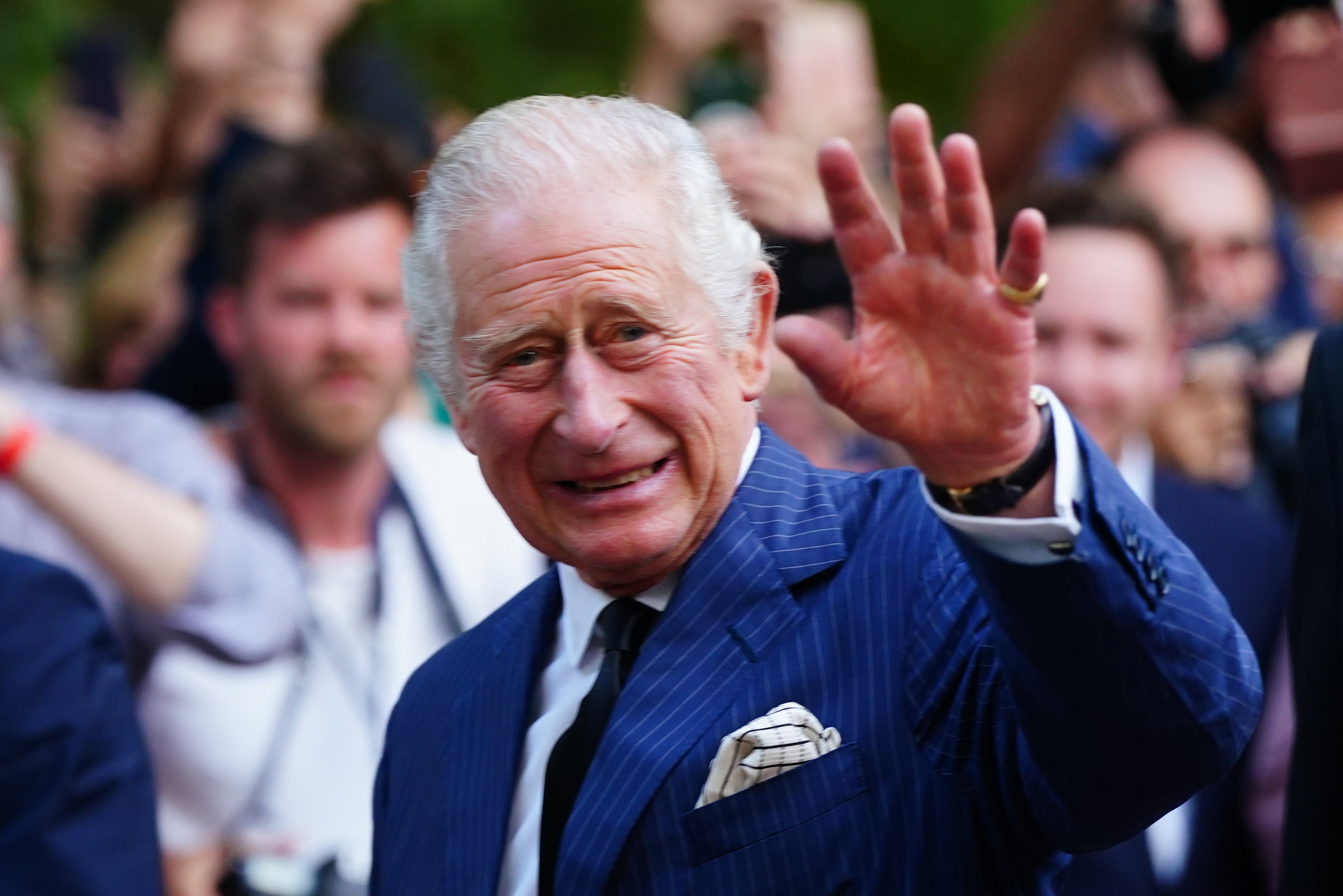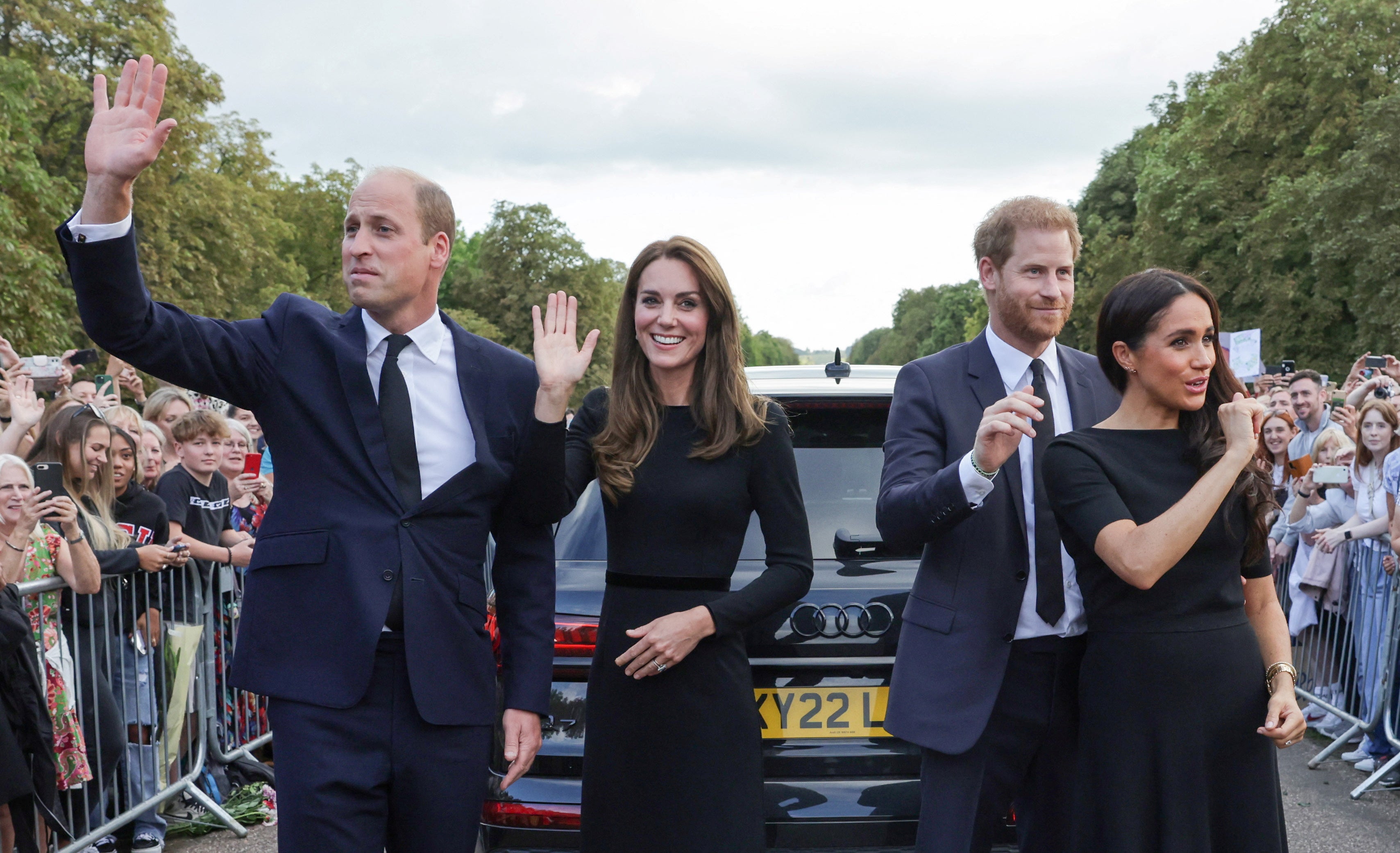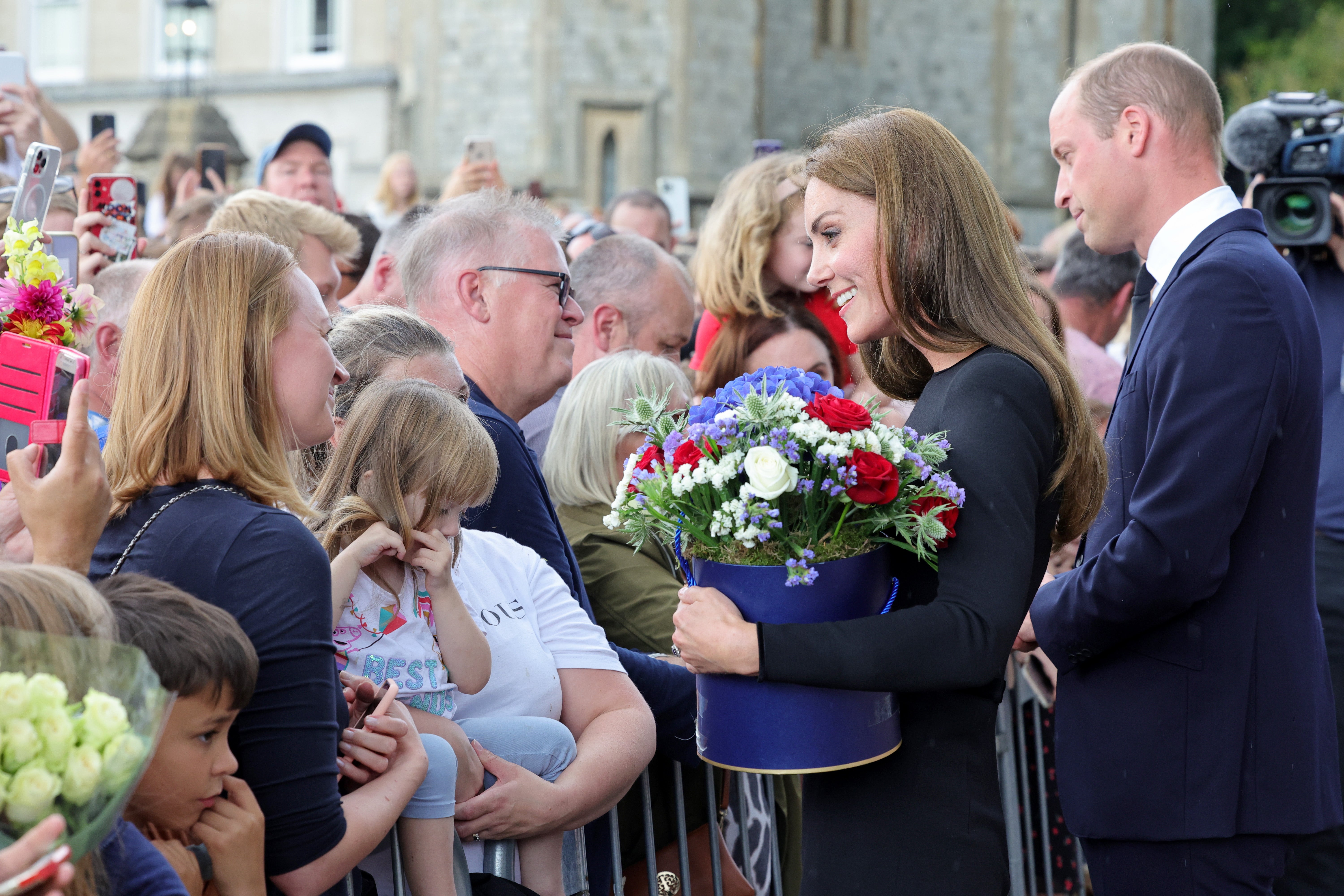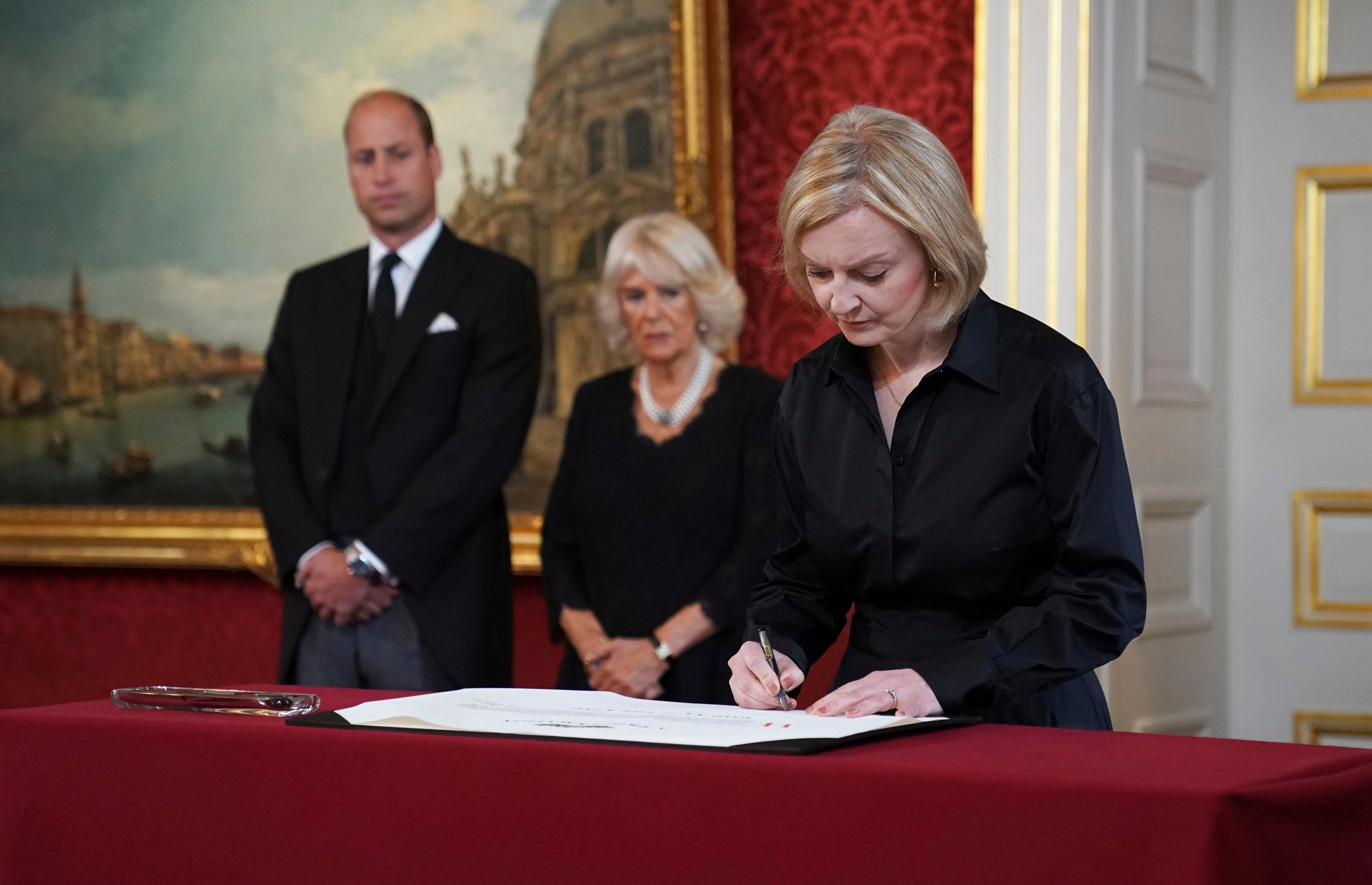Feuding princes William and Harry reunited in grief over death of the Queen
The day of the state funeral on 19 September will be a bank holiday throughout the UK
Your support helps us to tell the story
From reproductive rights to climate change to Big Tech, The Independent is on the ground when the story is developing. Whether it's investigating the financials of Elon Musk's pro-Trump PAC or producing our latest documentary, 'The A Word', which shines a light on the American women fighting for reproductive rights, we know how important it is to parse out the facts from the messaging.
At such a critical moment in US history, we need reporters on the ground. Your donation allows us to keep sending journalists to speak to both sides of the story.
The Independent is trusted by Americans across the entire political spectrum. And unlike many other quality news outlets, we choose not to lock Americans out of our reporting and analysis with paywalls. We believe quality journalism should be available to everyone, paid for by those who can afford it.
Your support makes all the difference.Princes William and Harry were reunited in grief on Saturday afternoon as they viewed floral tributes to Queen Elizabeth II at Windsor Castle.
The Prince of Wales and Duke of Sussex, who were accompanied by their wives Princess Kate and Meghan, spoke with well-wishers just a day after King Charles III used part of his first address to the nation to try to draw a line under the rows resulting from Harry’s decision to withdraw from royal duties.
A royal source said: “The Prince of Wales thought it was an important show of unity at an incredibly difficult time for the family.” It is understood that Prince William invited his younger brother to join him for what was their first public appearance together since the unveiling of a statue of their mother, Diana, Princess of Wales, in July 2021. They both attended a service of thanksgiving for the Queen’s platinum jubilee earlier this year but did not speak.
Their walkabout came as William issued a heartfelt tribute to the woman he knew as “grannie”, hailing her as an “extraordinary” leader for the country and a source of wisdom and reassurance for her family.
The coffin bearing the Queen’s body will leave Balmoral Castle on Sunday on the first leg of its journey towards the state funeral at Westminster Abbey on Monday 19 September, travelling to Edinburgh, where it will lie at rest in St Giles’ Cathedral. Scotland’s first minister, Nicola Sturgeon, said the “poignant” journey would give the public a chance to “mark our country’s shared loss”.
King Charles has ordered a bank holiday across the whole United Kingdom on the day of the funeral, to allow millions of Britons to participate in the final farewell to the monarch who reigned for 70 years.
From Holyroodhouse in Edinburgh, the coffin will be taken in procession along the Royal Mile to St Giles’ Cathedral. After a service attended by members of the royal family, it will remain at the cathedral for a period of lying at rest until 13 September. It will then be flown by the RAF to the Northolt airbase in London and taken to Buckingham Palace, then on to parliament, where the Queen will lie in state in Westminster Hall.
Over the following days ahead of the state funeral, the coffin will stand on a catafalque in the hall, guarded by troops from the Household Cavalry and Guards regiments. Thousands of people are expected to file past the late monarch’s coffin during the period of lying in state.

From there, it is expected to be taken on a gun carriage hauled by Royal Navy sailors to Westminster Abbey for the state funeral service, then moved to St George’s Chapel in Windsor, where the Queen will be laid to rest. The coffin of Prince Philip, the Queen’s husband of 73 years who died in April 2021, is expected to be moved from the royal vault at Windsor to be buried alongside his wife.
After being formally proclaimed King in an accession ceremony at St James’s Palace in London, he paid tribute to his mother’s reign for “its duration, its dedication and its devotion” and promised to follow her example of “lifelong love and selfless service”.
In an address to the nation hours after the Queen’s death on Thursday, King Charles made a point of not only confirming William as the new Prince of Wales but also sending a message of “love for Harry and Meghan as they continue to build their lives overseas”.
His comment was seen as a very public attempt to heal the rift which has grown up since the Sussexes’ “Megxit” move to California and their decision to speak out about life inside the royal family.

The first sign of differences between the brothers came in 2019 when the pair broke up their joint foundation as Harry and Meghan moved out of Kensington Palace amid allegations of bullying of staff. Harry told a TV documentary that he and his elder brother were on “different paths”.
Two years later, in a bombshell interview with Oprah Winfrey, the Duke described his relationship with William as “space”, adding: “Time heals all things, hopefully.”
He told Winfrey he felt let down by his father, who he said had stopped taking his calls. Meanwhile, Meghan accused the then Duchess of Cambridge of making her cry in the run-up to her wedding.
The brothers both went to Balmoral on the day of the Queen’s death. And on Saturday, they emerged together from Windsor Castle with their wives, all dressed in black.
Both brothers shook hands with young and old, accepted bunches of flowers and thanked people for their wishes.

Earlier in the day, the formal process of transition to the new sovereign’s reign continued with the meeting of the accession council to proclaim Charles King.
In the presence of Prime Minister Liz Truss and all of her living predecessors – Sir John Major, Sir Tony Blair, Gordon Brown, David Cameron, Theresa May and Boris Johnson – an official read the proclamation declaring Charles III “our only lawful and rightful liege lord”.
The King was not present for the ceremony in the palace’s picture gallery but immediately afterwards held his first meeting with the privy council in the throne room, where he vowed to follow the “inspiring example” of his mother in fulfilling his duties as head of state.
And, in a clear indication that he intends like the late Queen to remain monarch until death, he promised to serve the nation in this role “for what remains to me of my life”.
The King said he was “deeply aware of this great inheritance and the duties and heavy responsibilities of sovereignty which have now passed to me”.
And he added: “In taking up these responsibilities, I shall strive to follow the inspiring example I have been set in upholding constitutional government and to seek the peace, harmony and prosperity of the peoples of these islands and in the Commonwealth realms and territories throughout the world.”

Ms Truss and other senior parliamentarians, including Labour leader Sir Keir Starmer and Commons speaker Sir Lindsay Hoyle, later made oaths or affirmations of allegiance to the new King during an unusual Saturday sitting of the House to hear tributes to the Queen.
And King Charles held an informal audience with the prime minister and members of her cabinet at Buckingham Palace.
In his statement paying tribute to the Queen as monarch and grandmother, Prince William said: “She was by my side at my happiest moments. And she was by my side during the saddest days of my life. I thank her for the kindness she showed my family and me.”
He added: “My grandmother famously said that grief was the price we pay for love. All of the sadness we will feel in the coming weeks will be testament to the love we felt for our extraordinary Queen. I will honour her memory by supporting my father, the King, in every way I can.”





Join our commenting forum
Join thought-provoking conversations, follow other Independent readers and see their replies
Comments